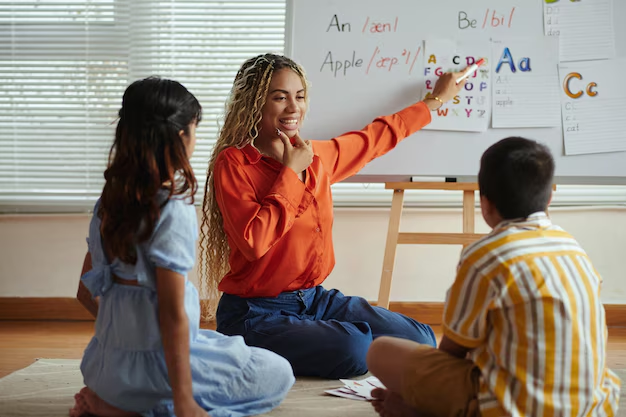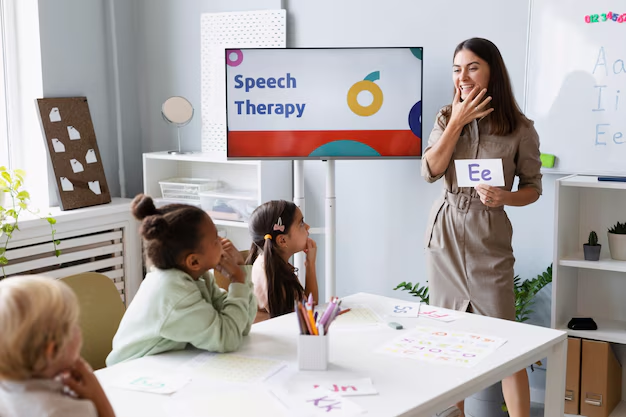If you’ve ever helped a child sound out words while reading, you’ve already seen phonics in action. But when it comes to helping kids who struggle with reading, especially those with dyslexia or other learning differences, it’s important to understand what is systematic phonics instruction and how it differs from casual reading practice.
So, what is systematic phonics instruction, and why do educators and specialists trust it to build strong reading foundations? Let’s break it down in simple, parent-friendly terms.
Role of Phonics in Building Early Reading Success
Phonics is the method of teaching how letters represent sounds. It’s the foundation of decoding, the skill that helps children read unfamiliar words by sounding them out. Without this skill, many children rely on memorization or guessing, which leads to slow progress and frustration.
Phonics instruction gives children the tools they need to become independent readers. For students who are falling behind, our reading intervention program uses systematic phonics instruction to offer targeted, structured support that helps close skill gaps and build confidence.
What Makes Phonics Instruction Systematic, Structured, and Intentional?
Systematic phonics instruction means teaching letter-sound relationships in a carefully planned, sequential order. Students begin with the simplest sounds—like single consonants and short vowels—and gradually move on to more complex combinations like digraphs, diphthongs, and long vowels.
This approach ensures that students fully understand each concept before being introduced to new material. It reduces confusion, promotes mastery, and builds a reliable foundation for all future reading.
Why Explicit and Systematic Phonics Instruction Is Most Effective
Research shows that phonics instruction is most effective when it is taught explicitly and systematically. That means lessons follow a consistent structure and build on each other logically, without skipping essential steps.
Children, especially those with learning difficulties, benefit greatly from explicit and systematic phonics instruction. They don’t have to guess or memorize; they simply apply the sound patterns they’ve already been taught, making learning to read much less stressful and far more successful.
What a Systematic Phonics Lesson Typically Includes
A strong, well-designed lesson in explicit systematic phonics instruction usually includes:
- A review of previously learned sounds or spelling patterns
- Introduction of a new sound-letter combination
- Guided practice reading and spelling words using the new pattern
- Reading decodable sentences or short passages that reinforce the skill
This kind of structured lesson gives children repeated exposure to the sounds and patterns they’re learning, which helps commit them to long-term memory. For example, a child struggling with the word “ship” might first learn the individual sounds /sh/, /i/, and /p/ across a series of lessons. Once those are understood, they blend them together to decode “ship” independently, without needing to guess.
Which Is an Example of Systematic Phonics Instruction?
A systematic phonics instruction example would be a lesson focused on teaching the /sh/ sound. First, the teacher introduces the digraph “sh” and explains that these two letters together make one sound. Then, students practice identifying the /sh/ sound at the beginning and end of words like “ship,” “shop,” and “dish.”
Next, the class blends and spells words containing “sh,” gradually moving to reading simple sentences such as “The ship is on the sand.” This lesson builds on prior knowledge of individual letter sounds and follows a clear sequence, making it one of the ideal systematic phonics instruction examples in practice.
Benefits of Systematic Phonics-Based Instruction Programs
Systematic phonics-based instruction programs are especially helpful for children who struggle with reading fluency, decoding, or spelling. These structured programs focus on building the essential skills needed for confident, accurate reading.
Key benefits include:
- Better word recognition and decoding accuracy
- Increased fluency and speed while reading
- Stronger spelling and vocabulary skills
- Greater reading confidence and motivation
These benefits are particularly important for children with dyslexia, ADHD, or speech and language delays.
Strategies for Teaching Phonics at Home or in the Classroom

You don’t need to be a teacher to use effective strategies for teaching phonics. Whether you’re supporting your child at home or working with students in a classroom, here are some easy, proven techniques:
- Focus on the basics first. Start with single consonants and short vowels.
- Use multisensory learning tools. Let kids trace letters in sand or say the sounds while writing.
- Practice blending aloud. Help them combine individual sounds into full words.
- Play sound-based games. Rhyming, matching, and segmenting games make learning fun.
- Use decodable readers. These books are written with the phonics patterns your child is learning, reinforcing their skills in real reading situations.
Strategies For Best Phonics Instruction
The most effective phonics strategies are grounded in a deep understanding of what is systematic phonics instruction and how it supports long-term reading success. These strategies work best when they are:
- Explicit: Each concept is clearly explained, not left to chance.
- Systematic: Sounds and patterns are taught in a logical order.
- Cumulative: New material builds on previously learned skills.
- Diagnostic: Instruction is adjusted based on ongoing student progress.
At Learnability, these principles are at the heart of every reading program we offer. Our goal is to help students build skills that last and support them every step of the way.
Why Structured Phonics Instruction Matters
Children with learning challenges—such as ADHD, dyslexia, or processing delays—often need more repetition and structure to learn effectively. That’s where explicit and systematic phonics instruction comes in.
It gives these students a clear path to follow. Instead of being overwhelmed or guessing their way through reading, systematic and explicit phonics instruction teaches them the tools to decode and understand words with confidence.
How Older Students Can Still Benefit
Phonics-based reading isn’t just for young children. Older students who missed key foundational skills in the early grades often benefit greatly from going back and filling in those gaps with structured, explicit and systematic phonics instruction.
Whether they’re in fourth grade or high school, students can improve fluency, spelling, and confidence when the right strategies are used. It’s never too late to build a stronger reading foundation.
Final Thoughts
So, what is systematic phonics instruction? It’s more than just teaching sounds—it’s a structured, research-backed method that helps children become strong, independent readers. By introducing sounds and letter patterns in a clear, step-by-step way, it eliminates guesswork and builds confidence. This approach is especially important for children who struggle with reading due to dyslexia, ADHD, or other learning challenges. Unlike less structured methods that rely heavily on memorization or pictures, explicit systematic phonics instruction teaches students how to decode words using skills they can apply for life. It’s not just about reading a specific list of words—it’s about giving your child the tools to read any word they encounter.
At Learnability, we specialize in personalized learning through online reading programs built around these principles. Our evidence-based methods and certified specialists are here to help your child succeed.
Contact us today to learn how our structured phonics programs can support your child’s learning at home and build the reading confidence they deserve.


